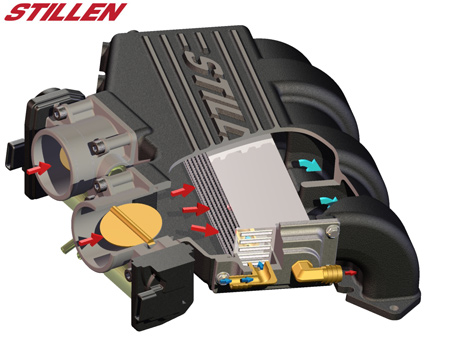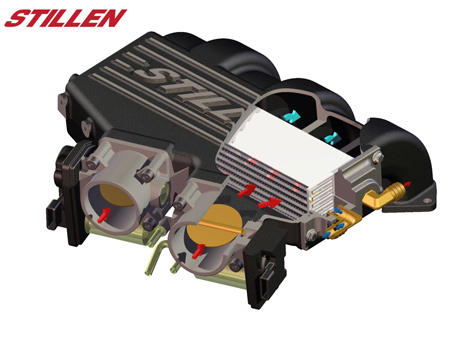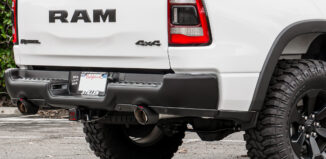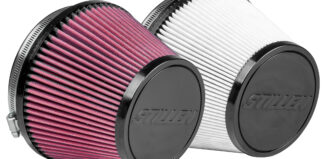In the last update post we showed the new Intake Manifold and discussed the function of the Air-to-Water Intercooler System. Heres some more details on the design of the Intake Manifold and the engineering behind the STILLEN VQ37 Supercharger System.
As you can see we have relocated the throttle bodies to one side of the intake manifold. There are several reasons for this:
Intercooler Installation – Our intercooler is actually incorporated into the intake manifold. This dramatically decreases the intake air temperatures right before the engine receives the air. On the 350Z we found that the intercooler removed over 100 degrees immediately before the air entered the engine. There are other intercooler styles available, such as the water boxes that Vortech offers that are before the throttle body. Unfortunately on the VQ37 this would have significantly increased the cost, having two intercoolers and all of the associated plumbing, as well as space required in the engine bay would have been a major issue. Additionally, there is a lot of residual heat inside of an engine bay. Heat coming off of exhaust manifolds, the engine block, valve covers and more. Running two pipes across the top of all of this heat would only cause the air to re-heat inside the pipe prior to going into the engine. By cooling the air in the manifold immediately prior to its introduction into the engine we are getting the air as cool as possible.

Equal Pressurization – Yes, it would have been possible to simply use a Y-pipe design coming off the supercharger that went into the throttle body. The problem with this design is the different length tubes would cause an unequal amount of air entering the intake manifold on each side. Imagine a centrifugal supercharger mounted behind the headlight on either side of the vehicle. On the supercharger side, the air would only have to travel a foot or two to one throttle body, but on the opposite side the air would have to travel three feet across the front of the core support then another two feet back to the throttle body. This differential in distance means that one side of the plenum is seeing boost well before the other side, causing uneven air flow and pressure. This potentially could cause issues with tuning, power delivery, and could even cause additional turbulence inside the intake pipes. If both throttle bodies are open and one is receiving forced air but the other is still requiring the engine to be sucking air this will cause a large amount of turbulence inside the intake manifold. By equalizing the length of pipe that the air has to travel through, the engine will receive forced air in the intake manifold equally through both throttle bodies, thus reducing any turbulence.
Equal Air Distribution – It is very important to ensure that the air pressure is equal prior to going into the manifold, but it is even more important that the air is distributed evenly to each cylinder. The factory intake manifold has a very aggressive slope towards the front of the manifold. Combine that with the fact that the throttle bodies are aimed rearward, this could cause the front two cylinders to not get enough air thus causing the two front cylinders to run rich. By running rich and having more fuel than necessary in those cylinders it is actually hurting power and performance. By redesigning the intake manifold we are able to supply each cylinder with an equal volume of air which allows each cylinder to produce the most power possible and to work at its maximum level of efficiency.
Longer Runners – Another design that was incorporated into the intake manifold was a larger intake runner. By lengthening the intake runners we are able to increase torque which will help greatly with acceleration.
Here’s some higher resolution images of the 3D CAD renderings:
STILLEN Supercharger Development Posts
- 370Z / G37 Supercharger System Progress: R&D
- 370Z / G37 Supercharger System Progress: Intake Manifold & Intercooler
- 370Z / G37 Supercharger System Progress: Intake Manifold Design & Detail [Current]
- 370Z / G37 Supercharger System: Official Press Release
- 370Z / G37 Supercharger System: Endurance Testing Continues




